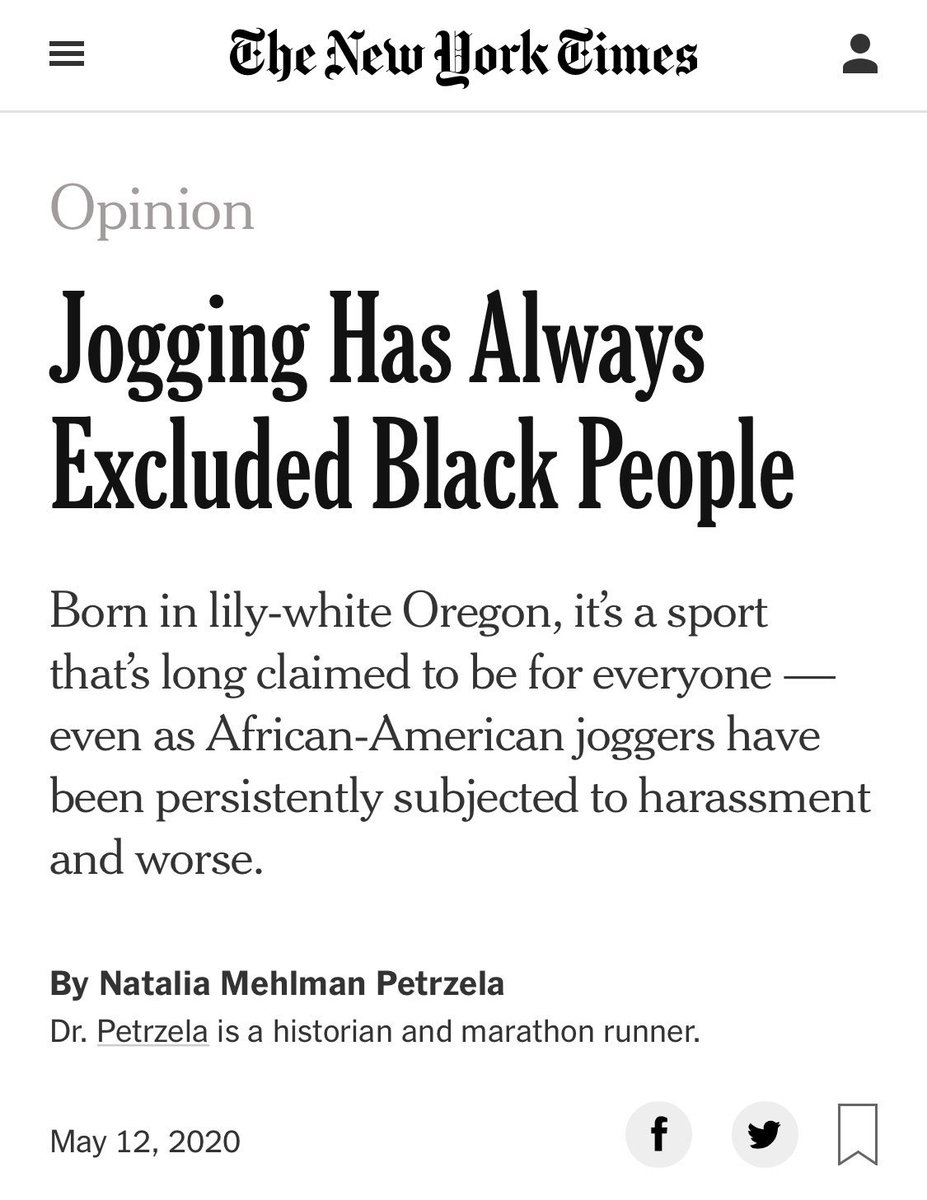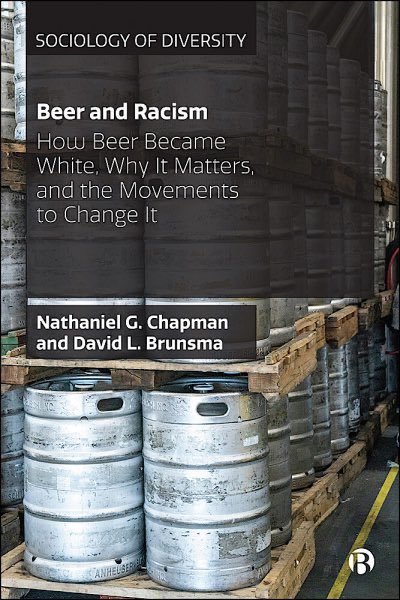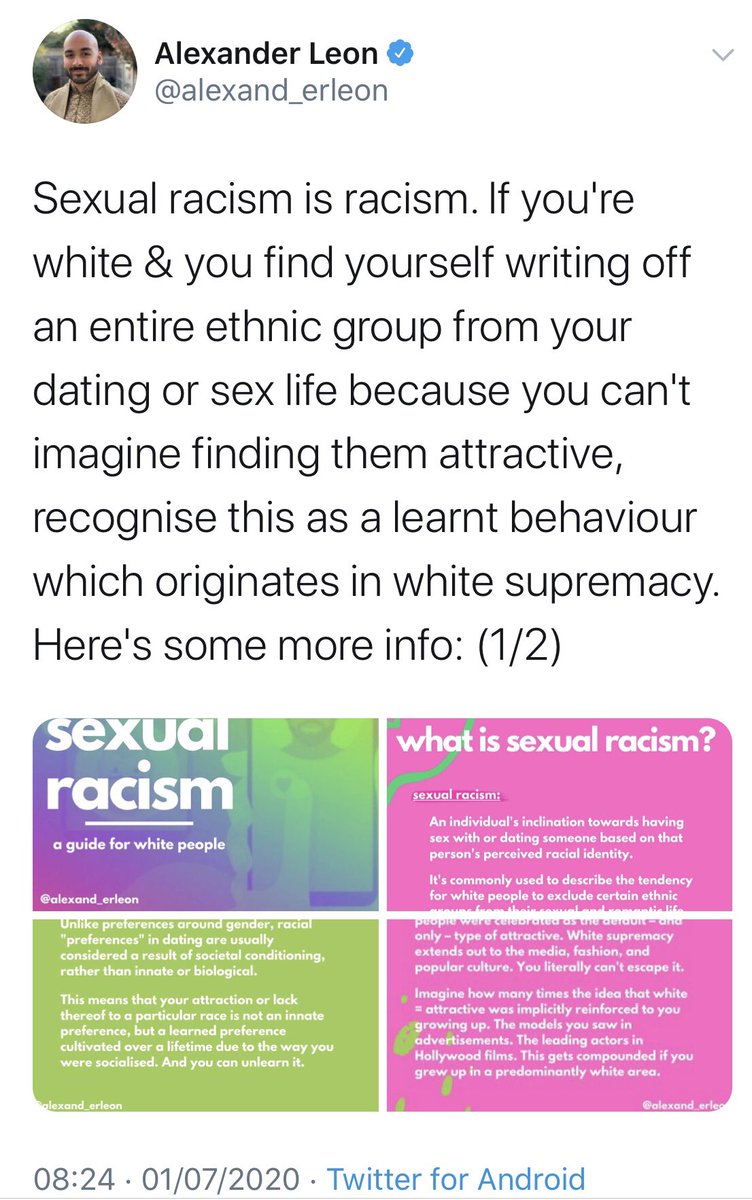Woke
- Started
- Last post
- 151 Responses
- Nairn6
I'm just going to leave this here.
- https://www.youtube.…drgs
- never gonna wash her lips again...neverscared
- Let's go Brian!monospaced
- Never scared. She's a man!pango
- milfhunter1
why is there a shitload of woke posts on the frontpage? Can we stop giving a fuck about this?
- its the other way around... u have to give more fucks.... the past is prologueneverscared
- There are two choices: either woke or RIP of the daydrgs
- users' upvotes make popular posts appear on the front pageimbecile
- That’s why you have 5 accounts for the 5 upvotes on every post you maketoemaas
- notes matterimbecile
- shapesalad-3
- What are you waiting for, then? Fuck off, and don't get an internet connection when you arrive, you utter fucking waste of DNA.Continuity
- lol, you're cuteshapesalad
- And you're a sack of shit.Continuity
- lol...this is like the video version of what I posted earlier
https://www.qbn.com/…yuekit - You're really convincing me that being open minded, woke and migrant hugging is good.shapesalad
- imagine all the convervative douchebags movin... o what a delight for a free open society..neverscared
- Right? Sadly, they never deliver on their promises to do so.Continuity
- imbecile3
The Wilmington Insurrection, also known as the Wilmington Massacre or the Wilmington Coup, occurred on November 10, 1898, in Wilmington, North Carolina. It's considered one of the only successful coup d'états in U.S. history.
In the late 19th century, Wilmington was the largest city in North Carolina, and it had a majority African American population. Black and white citizens held positions of power within the local government, creating a racially integrated political landscape, which was unusual in the post-Civil War South.
The political climate leading up to the insurrection was charged. There was increasing resentment from white supremacist groups towards the city's biracial government and efforts were made to stoke racial tension. The white supremacists sought to end what they termed "Negro rule" and initiated a campaign to do so, using the press to spread white supremacist propaganda.
On November 10, a mob of about 2,000 white men, led by prominent local citizens, embarked on a mission to overthrow the elected local government, expelling opposition black and white political leaders from the city. The mob burned the offices of the black-owned local newspaper, killed an estimated 60 to more than 300 people, and ran many others out of town.
Following the coup, many of the leaders of the insurrection were elected to office. The event marked the beginning of an era of severe racial segregation and disenfranchisement across the South.
For many years, the insurrection was not widely recognized as a coup but was misrepresented as a race riot initiated by the Black community. It's only in recent decades that a more accurate understanding of the event has emerged, highlighting the insurrection as a violent overthrow of a legitimately elected local government.
Today, the 1898 insurrection is recognized as a significant event in U.S. history, an instance of violent overthrow of an elected government in the name of white supremacy. It underscores the severe racial and political tensions of the era and the lengths to which some were willing to go to maintain white dominance in the South.
- Still calling out ChatGPT articles :) - my other call outs got erasedtoemaas
- imbecile4
The Rosewood Massacre was a horrific incident of racial violence that took place in the first week of January 1923 in the predominantly African American town of Rosewood, Florida.
The violence began after a white woman in a nearby town, Fannie Taylor, claimed that she had been assaulted by a Black man. Despite no evidence supporting her claim, her accusation ignited racial tensions in the area. A group of white men, believing that the perpetrator was hiding in Rosewood, began to terrorize the town, attacking residents and destroying homes and buildings.
Over the course of several days, the violence escalated, and the town was burned to the ground. The exact number of people killed in the massacre remains unclear because of the inconsistency in the reports, but it's estimated that at least six Black people and two white people were killed. However, eyewitness accounts suggest the number of Black residents killed could have been in the dozens. Many of the survivors fled into the nearby swamps for safety and never returned to their homes.
In the aftermath of the violence, Rosewood was abandoned and the events were largely covered up. For decades, the Rosewood Massacre remained a little-known episode of racial violence in U.S. history.
It wasn't until the 1980s that the event was brought to public attention through a series of investigative news reports. This led to a renewed investigation into the events and in 1994, the Florida Legislature approved a compensation bill for the survivors and their descendants, making it the first instance of reparations for racial violence in U.S. history.
The story of the Rosewood Massacre is a stark reminder of racial violence and injustice in the United States, and the efforts to uncover the truth represent the ongoing process of reckoning with this history. The event has been depicted in several works of literature and film, most notably the 1997 film "Rosewood" directed by John Singleton.
- imbecile0
Sergeant Isaac Woodard Jr. was a decorated African American World War II veteran. He is most known for an incident that happened on February 12, 1946, shortly after his honorable discharge from the United States Army. On his way home to Winnsboro, South Carolina, while on a bus trip from Camp Gordon in Georgia, he was attacked by law enforcement officials, which led to him being permanently blinded.During the bus trip, Woodard asked the bus driver if he could stop to use a restroom. The bus driver initially refused, but eventually stopped the bus. When Woodard returned, he and the bus driver got into an argument. Despite the intervention of other passengers who sided with Woodard, the driver stopped at the next town, Batesburg (now Batesburg-Leesville, South Carolina), and contacted the police. Woodard was removed from the bus and arrested by Chief of Police Linwood Shull.
While in custody, Woodard was brutally beaten by Shull with a nightstick, which resulted in Woodard losing his sight in both eyes. Despite national attention and the subsequent trial of Shull (who was defended by a future governor of South Carolina), the all-white jury quickly acquitted Shull.
The incident, and the failure of the justice system to hold anyone accountable, sparked national outrage and galvanized the civil rights movement in the United States. It prompted President Harry S. Truman to establish the President's Committee on Civil Rights, and also led to the desegregation of the armed forces via Executive Order 9981 in 1948.
Woodard's life and the horrific incident that befell him were also recognized and remembered in popular culture, including in a 2019 documentary titled "The Blinding of Isaac Woodard."
There is a monument dedicated to Sergeant Isaac Woodard in Batesburg-Leesville, unveiled in February 2021, 75 years after the incident.
- imbecile1
Ellen and William Craft were an enslaved married couple from Macon, Georgia in the United States who escaped to the North in December 1848 by traveling openly by train and steamboat, arriving in Philadelphia on Christmas Day. They became celebrities among abolitionists in the North and their daring and innovative escape has been widely written about in historical literature and was a symbolic blow against slavery.
Their escape plan was quite ingenious and relied heavily on Ellen's light-skinned complexion, which allowed her to pass for white. William was to pose as Ellen's personal servant. Ellen disguised herself as a white male planter due to her light skin. Because she couldn't write, Ellen wore her right arm in a sling to avoid having to sign any documents and feigned illness, which explained why her "servant" would handle all interactions.
They traveled by train and steamboat from Georgia to Pennsylvania, a free state, and their journey took them about a week. Throughout their travel, they faced various challenges and close calls, but their clever plan and courageous execution saw them arrive in Philadelphia on Christmas Day, 1848.
After reaching the North, the Crafts became well-known anti-slavery activists and speakers, publishing their story in a two-part article in William Lloyd Garrison's newspaper "The Liberator". Their memoir "Running a Thousand Miles for Freedom: Or, The Escape of William and Ellen Craft from Slavery" was published in 1860.
The Fugitive Slave Act of 1850, however, put them in danger even in the free states, as this law required officials in the free states to help in the capture and return of escaped slaves. The Crafts then moved to England, where they continued their activism and raised their children. After the Civil War ended and the Emancipation Proclamation was enacted, they returned to the United States and set up an educational institution for freedmen and their children in Georgia.
Their story has been celebrated as an example of ingenuity, courage, and resistance against the oppressive system of slavery.
- drgs-7
- I didn't say stupid articles don't exist but you have to admit it's pretty funny that people have now started writing fake articles like this...yuekit
- started?!? https://whatsnewinpu…whatthefunk
- Do we agree that "decolonizing cycling" and "racist beer" is a slight detour from black families being stripped of their businesses and properties in the 1930s?drgs
- drgs no one is saying there aren't left-wing idiots out there. What's a little weird is how people seem to enjoy collecting and sharing articles like these.yuekit
- https://twitter.com/…drgs
- And apparently they enjoy it so much someone set up a site pretending to be black and started writing fake articles to keep up with the market demand.yuekit
- This shit is cancerouscrazyprick
- it's called clickbait, google it lol, amazing how seemingly intelligent people here get manipulated so easily. Bizarre actually. Make your algos great again!fadein11
- It's like tabloids at the grocery store...eventually they ran out of real celebrity news and started making stuff up.yuekit
- Clickbait? Just check the authors of these "articles". Look closely. It's nothing but propaganda.crazyprick
- The headlines are mostly all clickbait yes to drive ad revenue. Do you even surf?fadein11
- Minor issues that won't affect you at all pushing the rage buttons, hilarious you fools still fall for it. But it works I guess.fadein11
- Yea
Where are the real woke issues?
Not the ones from the last centurydrgs - These are the types of articles that the right attach themselves to.utopian
- Articles like this have always existed but they were opinion pieces and everyone took them with a grain of salt. These act more like front news headlines_niko
- Like they were written by a journalist who did actual research and vetted by the editor and approved by the newspaper.
The only purpose of these is to make_niko - ...money by getting people to click on their BS outrage stories. They are the modern equivalent of the national inquirer and world news. Bat-boy lives!_niko
- And it is my point exactly.
Wokeness today = 50% racist beer + 50% kitten/kittenself pronounsdrgs - The race grifters have to do something with their degrees to make money. The fact that parody is indistinguishable from earnest expression is telling enoughGnash
- As ridiculous as these articles may seem they have IRL impact. our government, at least, actually dumps tax dollars into dewhitesupremisizing our public parksGnash
- Imagine being perceptive to other human beings as a practice instead of just bitching about your offended privilegescotton
- You act like it's all clickbait, but there's a bunch of fucktards that believes in this shit. Don't downplay it, cunts.crazyprick
- exactly gnash._niko
- and for better or for worse, news we would consume 30 years ago had some sort of journalistic integrity, many journalists were great thinkers and scholars._niko
- everything went through a system of checks and balances. Nowadays we get our "news" form the equivalent of the Jerry Springer show. Every moron wanting his 15s_niko
- A lot of journalism is shit...there are lots of overly sensitive idiots out there...so why repost this stuff all the time?yuekit
- While acting like it's terrible some of you clearly get a kick out of it. Anyway I'm off to make a fake black activist site, I'm going go cash in on this trend.yuekit
- Same reason you post shit, lolGnash
- rage bait is pretty much a business. avoid of all sincerity. places like foxnews, alexjone, libs.of.tiktok. rage and absurdity drives the view and money.pango
- Are we even sure this is clickbait exclusively for right-wingers? If I was black I would be jerking off to thisdrgs
- if you're black like Rachel Dolezal, maybe you would.pango
- it's rage bait for everyone. look how many notes we posted lolpango
- you post and still don't get it, really amusing to watch. Like I said seemingly clever people manipulated so easily for clicks and outrage.fadein11
- You're dangerously downplaying this shit. I agree that journalism is fucked and there's a fuckload of clickbait out there, but don't be blinded by this fact.crazyprick
- Russia's tactic pre Brexit and Trump was to fill the web with divisive psts, billions of them. It wasn't about posting ideologically driven stuff, it was aboutfadein11
- creating chaos, and look where we are now. But these articles are all about $$$. All about a failing industry trying to stay relevant online.fadein11
- ragebait or not - there 100% are a bunch of people, especially if you live in a major city, that believe and practice this way of looking at the worldinteliboy
- +1 inteliboycrazyprick
- Gnash-6
- technically it was created by goats...
I'd be up in hooves if I were them_niko - Especially if you ask for a white coffee!shapesalad
- I'm ready for the asteroid.ApeRobot
- +1 _nikoNairn
- Rum is literally slave juice.
Milk is supremacy flexing.
Wine is offensive to Muslims.shapesalad - Kopi luwak is animal cruelty and offensive to Vegans.shapesalad
- lol...this doesn't seem to be a real leftist website but a site made entirely so that people can make posts like this and feel outraged.yuekit
- https://twitter.com/…yuekit
- It's funny that you had to check.palimpsest
- Well it looks like someone went to the trouble of setting up a website to make people think it's real.yuekit
- you don't saywhatthefunk
- We have one of those, it’s called cbc.ca_niko
- Difference being that the CBC needs billions of our dollars. This site looks pretty cheapGnash
- the argument is it's harder to maintain Impartiality with private funds. and i do think cbc's doing a good job at being impartial.pango
- lol and they do get called being partial from left and right.pango
- All just clickbait garbage.sab
- technically it was created by goats...
- imbecile2
this thread is fun, either you're the type who can care about someone else or you're a selfish prick. strange how both sides are proud of themselves, though. stranger still is the amount of hate spewn for known rhetoric when the obvious truth is right before you. woke is nothing more than being aware of social injustice. that doesn't even take time out of a privileged life. just don't be a dick. be understanding. but to ignore cops killing blacks, shooters attacking homosexuals, choosing to amplify the nonsense instead of addressing the issues is nothing short of sad and pathetic.
- I disagree. Boiling the current cultural landscape down to a binary choice for a planet of human individuals is monumentally naive.Morning_star
- you can disagree, you'll still be wrong. acting as if it is not a binary decision to care or not is asinine. clear cut discrimination is not up for discussion.imbecile
- utopian6
- he needs his nails painting.shapesalad
- whats the 3rd time?pango
- Rainbow reading while black.utopian
- Commandment no. 11:
The shalst not denigrate the essential and ever-growing –'ness of Levar Burton.Nairn - *Thou, ffs.Nairn
- utopian. that's 2pango
- 3rd is they can't read?crazyprick
- 1) Rainbow
2) Reading
3) Black Manutopian - YupYakuZoku
- How will they be triggered if they can't readdrgs
- thanks obamaneverscared
- Levar Burton always gets my upvote.Continuity
- https://www.youtube.…pango
- sted3
- this is fucking amazingautoflavour
- Shocker @ 0:57!ideaist
- shapesalad-4
The hue of homo-sapiens skin has until recently been a product of where those homo-sapiens resided in regards to Longitude.
While the modern world tries to embrace diversity, it is actualisation a disruption to the longitudinal evolution of the homo-sapien species.
The more pronounced effects of this are either a reduction in vitamin D3 synthesis or an increase in sunburn.
Discuss.
- There’s a lot of evidence that our ancestors didn’t give a fuck about skin colour. Most trading port cities had people living together quite peacefullyGnash
- People were more defined by their ethnicity/culture, not by their colourGnash
- yup, but I think it still is. If you look at the issues in the US with race, it's not the colour of the skin that's the issue but the ethnicity/culture probably_niko
- plenty of Indian doctors or engineers or in Tech that are way darker than most black Americans but people aren't as racist towards them._niko
- Even recent African immigrants to the US be it business people, students, professionals or workers are treated with more respect._niko
- drgs-1
Imbecile, I like how you surgically circumvent the core of this thread: why the term "woke" has become what it is, and why it's harming support for the issues you've posted
- He’s in a perpetual hyperbolic fugue state. It’s fun to watchGnash
- The white son, so apt.palimpsest
- doth bad faith argument too much, methinkswhatthefunk
- imbecile1
a little more on https://qbn.com/reply/4093454/
The Triangle Shirtwaist Factory fire was one of the deadliest industrial disasters in U.S. history and marked a significant turning point in labor regulations.
Context and Factory Conditions
The Triangle Shirtwaist Company was located on the 8th, 9th, and 10th floors of the Asch Building (now known as the Brown Building) in the Greenwich Village area of Manhattan, New York City. It was a large manufacturer of women's shirtwaists (blouses). The company was owned by Max Blanck and Isaac Harris, who were known as the "Shirtwaist Kings."
The factory workers were mostly young, immigrant women from Italy and Eastern Europe. They worked six days a week, often up to 14 hours a day, in extremely crowded conditions. Pay was very low, and the working environment was harsh.
In terms of safety, conditions at the factory were abysmal. Fire safety measures were virtually non-existent. There were no fire drills, and the factory's owners reportedly locked the doors to the stairwells and exits – a common practice at the time to prevent unauthorized breaks and theft.
The Fire
The fire began on the afternoon of March 25, 1911. It is believed to have started in a scrap bin, possibly caused by a discarded cigarette or match, although the exact cause was never determined. The bin held two months' worth of fabric scraps, which provided ample fuel for the fire.
The flames spread quickly, consuming the flammable shirtwaists and other materials throughout the factory. Workers tried to extinguish the fire with buckets of water, but the factory had no sprinkler system, and the flames quickly got out of control.
As workers tried to escape, they found that the doors to the stairwells and exits were locked. The only fire escape, a flimsy and poorly-constructed iron structure, collapsed under the weight of the many workers trying to escape.
Many workers rushed to the windows, but the fire department's ladders were too short to reach the upper floors of the ten-story building. Some workers jumped from the windows to their deaths, a sight that horrified onlookers.
Aftermath and Trial
The fire resulted in the deaths of 146 garment workers, most of them young women. The factory's owners, Blanck and Harris, were charged with manslaughter. Their trial began in December 1911, and they were defended by prominent lawyer Max Steuer. Despite witness testimonies, they were acquitted in 1914. Later, in a civil suit, they were ordered to pay $75 per deceased victim.
Impact on Labor Laws
The public outrage over the fire and the treatment of the factory workers led to numerous changes in labor laws and the creation of regulatory bodies to enforce them. New York State established the Factory Investigating Commission to examine working conditions in factories and propose new laws.
Reforms that followed the tragedy included laws requiring better building access and egress, fireproofing requirements, the availability of fire extinguishers, and the installation of alarm systems and automatic sprinklers. Laws were also passed to limit the numbers of workers per floor, and regulations were put in place for the storage and disposal of flammable waste materials.
The tragedy also galvanized the labor movement. Union membership swelled, and the International Ladies' Garment Workers' Union became a powerful force advocating for the rights of workers in the garment industry.
Today, the site of the Triangle Shirtwaist Factory fire is marked by a plaque and is remembered as one of the events that spurred significant improvements in workplace safety and labor rights in the United States.
- imbecile0
The Pullman Strike was one of the largest and most influential labor actions in American history. Here's a deeper look at the strike and its connection to Labor Day:
The Pullman Strike: The Pullman Strike took place in the summer of 1894, primarily in Chicago, Illinois. It involved the American Railway Union (ARU) led by Eugene V. Debs and the workers of the Pullman Palace Car Company, which manufactured luxury sleeping cars for railroads.
Cause of the Strike: The Pullman Company, facing a downturn in business due to the economic depression of the time, cut wages for their workers by approximately 25% but did not decrease rents or prices in the company town where the workers lived. This led to a strike by the workers, which began on May 11, 1894.
Spread of the Strike: The ARU became involved when the Pullman workers sought their assistance. The ARU called for a boycott of all trains using Pullman cars. This spread the impact of the strike throughout the railway industry and disrupted railroad traffic across the Midwest.
Federal Intervention and Strike's End: The federal government intervened by getting a court injunction against the strike leaders, arguing that the strike was disrupting the delivery of the U.S. Mail and thus interstate commerce. When the strike leaders, including Debs, refused to obey the injunction, they were arrested. The strike was broken up by federal troops, leading to violent clashes and a number of deaths.
Establishment of Labor Day: The Pullman Strike was a significant event that raised awareness of labor issues. Later that year, President Grover Cleveland, in an effort to conciliate organized labor after the strike, pushed legislation to establish Labor Day as a national holiday. Labor Day was already celebrated in some states, but it was officially recognized as a federal holiday in 1894.
The Pullman Strike had a profound effect on American labor law and was instrumental in the establishment of Labor Day. It highlighted the federal government's role in labor disputes and led to greater recognition of workers' rights. Eugene V. Debs, the leader of the ARU during the strike, would go on to become one of the most famous figures in American socialism.
- imbecile4
Manzanar is most known for its role during World War II as one of the ten internment camps in the United States where over 110,000 people of Japanese descent were forcibly relocated and incarcerated.
Following the attack on Pearl Harbor in December 1941, there was widespread fear and paranoia in the U.S. about potential espionage and sabotage from people of Japanese descent. In response, President Franklin D. Roosevelt signed Executive Order 9066 in February 1942, authorizing the forced removal and confinement of all people of Japanese ancestry living on the West Coast, regardless of their citizenship status.
Manzanar, located in the Owens Valley in California, was the first of the "War Relocation Centers" to be established. It was hastily built and soon housed over 10,000 people, with a peak population of about 11,000. Living conditions were harsh. People lived in barrack-style housing with little privacy, ate in communal mess halls, and faced extreme weather conditions, from freezing winters to scorching summers.
The internees made the best of their situation by establishing schools, growing gardens, and even creating a newspaper. There was also a hospital, churches, and various recreational activities available.
Despite the attempts to create a sense of normalcy, life at Manzanar was marked by a lack of basic freedoms. The camp was surrounded by barbed wire and armed guards. Internees could not leave without permission, and their mail was censored.
The camp was closed in 1945, after the end of the war. In 1988, the U.S. government formally apologized for the internment of Japanese-Americans and established a fund to pay reparations to survivors of the internment camps.
Today, Manzanar is a National Historic Site to educate the public about the internment of Japanese Americans during World War II. Visitors can tour the remains of the camp, including reconstructed barracks, and visit a museum that explains the history and consequences of the internment.
- imbecile4
The MOVE bombing occurred on May 13, 1985, in Philadelphia, Pennsylvania.
MOVE was a black liberation group founded in 1972 by John Africa. The group lived communally and espoused a variety of beliefs including black revolutionary ideals, animal rights, and a return to nature. Their lifestyle and confrontational tactics often put them at odds with their neighbors and the city's authorities.
In 1985, after years of escalating tension and a previous violent confrontation in 1978, the Philadelphia Police Department attempted to forcibly evict MOVE members from their row house at 6221 Osage Avenue in West Philadelphia. The operation was based on numerous complaints from neighbors regarding health hazards associated with the property.
The standoff between police and MOVE members escalated to the point where the police dropped a bomb, made of C-4 plastic explosive and Tovex (a dynamite substitute), from a helicopter onto the MOVE house. The resulting explosion and subsequent fire killed 11 people, including five children, and destroyed approximately 65 nearby homes. Despite the magnitude of the event, the fire department was initially told to let the fire burn.
The bombing was widely criticized for its excessive force and the city's handling of the incident. The only surviving members of the MOVE household, Ramona Africa and Birdie Africa, were both charged and incarcerated in connection with the confrontation, though Birdie was later released.
In 2020, Philadelphia's city council formally apologized for the bombing, marking the first time the city had officially acknowledged wrongdoing in connection with the event.
- imbecile5
"Black Wall Street" is often used to refer to the Greenwood District of Tulsa, Oklahoma, which was one of the wealthiest African-American communities in the United States during the early 20th century.
Founded in 1906, Greenwood became a prosperous center for African American businesses, partly due to segregation which necessitated the creation of self-sustaining black communities. Greenwood's residents established successful businesses that included grocery stores, clothing stores, barber shops, hotels, and restaurants. The area was named "Black Wall Street" because of its economic success.
However, on May 31 and June 1, 1921, Greenwood was the site of one of the worst incidents of racial violence in U.S. history, now known as the Tulsa Race Massacre. Accusations that a black man had assaulted a white woman led to racial tensions which escalated into a full-blown attack on Greenwood by a white mob. Armed mobs, including some local authorities, burned down 35 city blocks, and an estimated 100 to 300 people were killed, most of them African American.
In addition to the human cost, the massacre caused extensive property damage, and the district of Greenwood was essentially destroyed. Despite the destruction, Greenwood's residents - many of whom had been rendered homeless by the attack - displayed remarkable resilience. They managed to rebuild much of the district in the years that followed, but the community never fully recovered its previous prosperity.
For a long time, the massacre was not widely known or discussed. However, in recent years there has been a push to acknowledge this dark chapter in American history and its impact on Black communities. The event has been the subject of numerous books, documentaries, and even dramatic works like the HBO series "Watchmen" and "Lovecraft Country". The 100th anniversary of the massacre in 2021 prompted even greater awareness and reflection on the event.




















